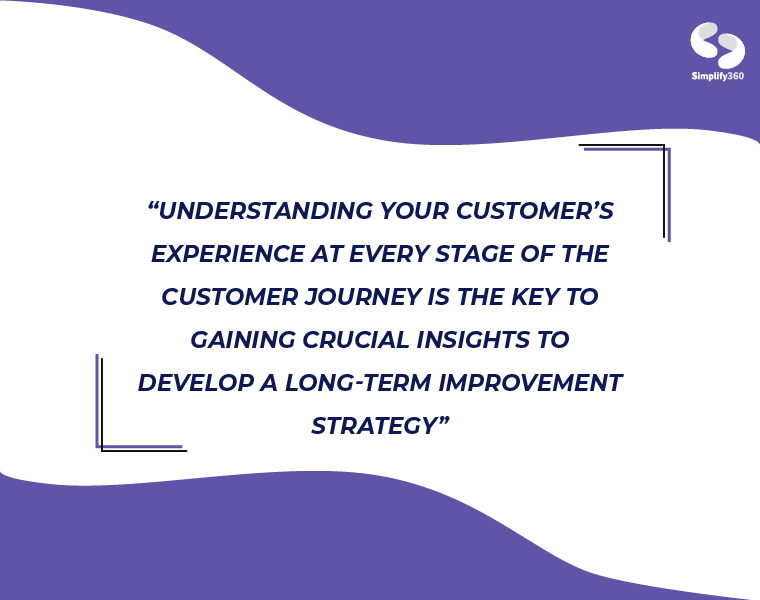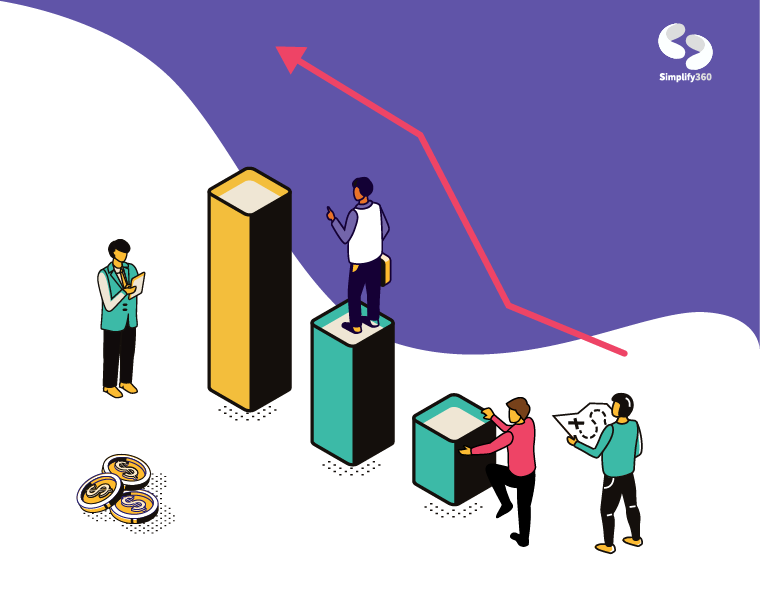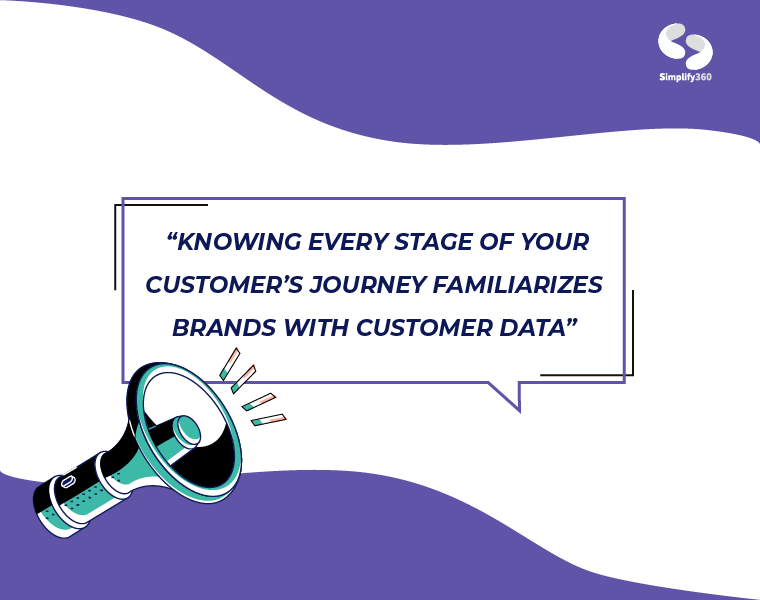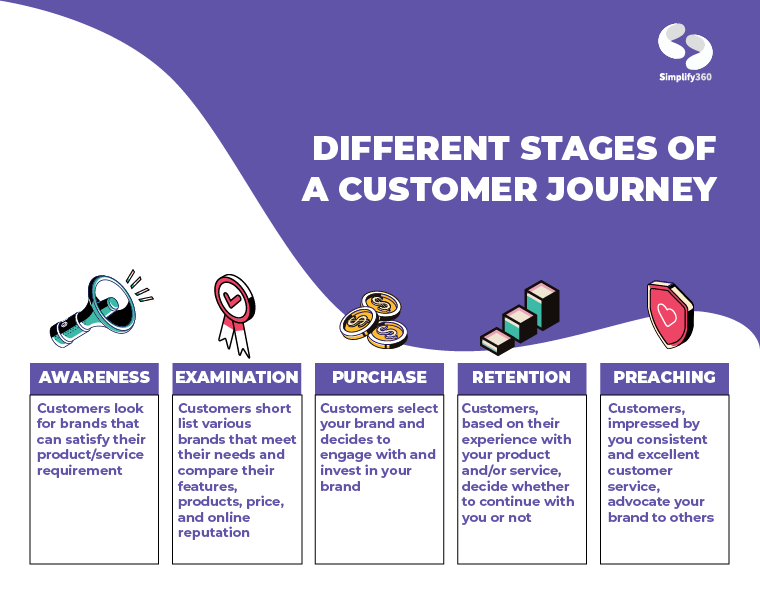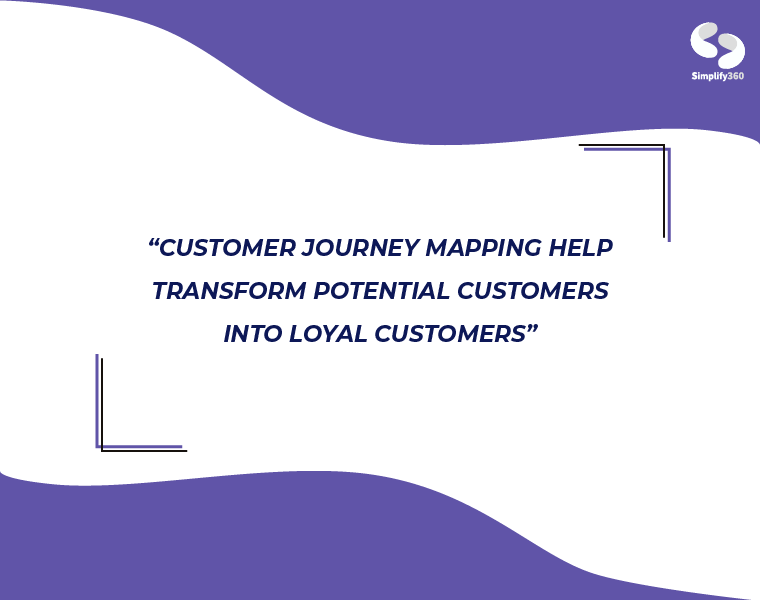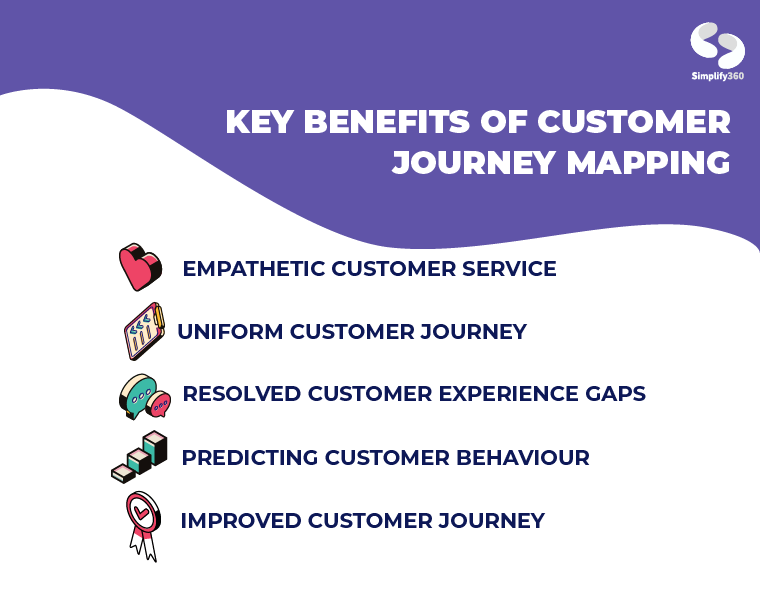Understanding customers is surely challenging.
Their, needs, wants and expectations are ever-changing. Their purchasing pattern and behavior are influenced by numerous external factors. These factors include the quality and price of your product, the marketing strategy used for product promotion, and the sales channels targeted.
Yet, nothing affects your customers’ purchasing decisions like your brand’s reputation.
Whether you own a small business or a big enterprise, modern customers first look for you online. That means online reviews are the first thing that customers interact with.
Thus, online reviews are symbolic of the customer experience you provide.
As we mentioned above, analyzing modern customers and their journey is like solving a puzzle.
Ideally, the customer journey from point A, i.e. adding a product to the cart to point B, i.e. making the payment should be a few minutes. And yet, almost 70% of customers abandoned their carts. Have you wondered, why?
We understand that defining customer needs, problems, and interactions with your company gets overwhelming at times. But, understanding your customer’s experience at every stage of the customer journey is the key to better CX. It helps you gain crucial insights into developing a long-term improvement strategy.
In this post, we’ll explore everything one should know about customer journey mapping. Right from what is a customer journey to how to map your customer’s journey.
So let’s begin.
What is a Customer Journey Map?
“The visual representation of a customer’s experience with a company is known as a customer journey map.”
A customer journey map provides insight into needs that direct a potential customer’s action.
In other words, customer journey maps provide a visual storyline for every engagement a customer makes with a service, brand, or product.
This information allows you (as a brand) to identify areas that need improvement. You can use this information to boost customer experience, increase conversion rates, and improve customer retention.
It helps you put yourself in a customer’s shoes. With this, you can understand
- common customer pain points
- customer personas
- customer behavior
Now that you know the basic definition of customer journey maps, let’s get an in-depth understanding of the customer journey.
What is Customer Journey?
In simplest words, the customer journey refers to the various stages at which customer interacts with your brand’s product or services. This can include both – direct and indirect interactions.
Here, direct interactions mean customer interactions with your support desk. Whereas, indirect interactions stand for brand awareness.
Remember, each customer’s journey is different than the other.
Therefore, in marketing,
The customer journey is interpreted as a map of unique interactions that a customer has with your brand at multiple touchpoints.
In other words, the path taken by individuals via various customer touchpoints is the customer journey.
Knowing every stage of your customer journey familiarizes brands with customer data. It equips you with the knowledge of what your customers like and what they detest. Eventually, it eases marketers’ job to guide customers towards excellent customer service.
Simply put, customer journeys help you develop a personalized marketing strategy.
Now that you understand the theoretical part of what a customer journey is, let’s see some practical outputs.
Stages of a Customer’s Journey
By now we know that customer journey is a term used to indicate the collective interaction that consumers experience as they interact with brands. Organizations and marketers use different nomenclature to mark stages of different customer interaction points. However, despite various names, the various phases are the same.
We have listed 5 main customer journey phases and what customers look for in them.
Stage 1 – Awareness
This phase goes hand-in-hand with brand and product awareness.
In the first stage, the customer is introduced to the product or service of a brand.
Remember, pushing the product down your customers’ throats is never fruitful. Initially, when customers are looking for a product/service they prefer educational leadership over promotional campaigns.
This stage requires the most input from your marketing team. It has more to do with generating leads than retaining the customer. It takes place before the purchase so make an effort to Inform the customer about your brand.
This can be done by integrating all the touchpoints that lead to your website.
Common marketing tactics for this phase include online ads, educational offers, consistent informative article boards, and eBooks.
Stage 2 – Examination
Once your customers are satisfied that your brand will meet their needs, they examine.
Also known as the Comparison or Research stage, this phase includes customers comparing your brand with others. This is because customers no longer settle for the first brand they come across. They compare product/service features, prices, and online reviews.
The best way to ace this stage – maintain a clean online reputation.
Your CX team is the major player here. They are required to reinforce their product features, softly nudging this potential consumer toward your brand.
Standard practices for this include blog content, case studies, email campaigns, and free demo sessions.
Stage 3 – Purchase
This stage includes transforming your potential lead into a marketing-qualified lead.
When potential customer engages with your brand, they look for proactive customer service. People at this point have a short list of brands they can engage with.
The sales department is the protagonist here.
Train your sales team to set up a good rapport with consumers. Introduce the success rate of an already existing customer.
A good sales process gives your organization an edge over your competitors.
Stage 4 – Retention
By this stage, the marketing qualifies lead has already become your customer. Hence, this stage (naturally) comes post-sale.
In the retention phase, organizations should implement proactive customer service. Hold regular training sessions for the products sold. In other words, establish regular communication to increase customer engagement.
We advise your sales reps to wait until a cross-sale opportunity arises to reengage with the customer.
P.S. – Customer retention is more cost-effective than customer acquisition.
Stage 5 – Preaching
Establishing a strong relationship with customers turns them into evangelists. Continuous meaningful customer experiences turn customers into vocal supporters of your brand.
Your customer support and service desk play the main role here.
When existing customers start talking about your brand, it leads to word-of-mouth marketing. This attracts new customers for your brand. And, guess what? Since your existing customers already feel appreciated they advocate your customer-centric service.
What you can do is ask your customers to volunteer for a case study.
Key Takeaway – Customer journeys help understand where each customer stands. It helps your marketing team identify and improve their content, conversation, and tone of ad campaigns. It helps your marketing team identify minor and major gaps. This helps them address customer pain points that often lead to losing a customer.
Ultimately, customer journey mapping help transform potential customers into loyal customers.
But, is this the only benefit we can gain from it?
Of course not!
Let’s see more benefits that come from the customer journey mapping process.
5 Benefits of Customer Journey Mapping
Customer journey mapping fundamentally means outlining the entire customer journey.
We all know that a customer journey is no walk in the park. As mentioned in the previous section, it consists of various stops and stages. From the moment the product is introduced to customers to the time they make payment, customers interact with various departments.
A customer journey map helps you visualize what your customer might be experiencing or may experience in the future.
Jim Kalbach, the author of Mapping Experiences, defined customer mapping as below.
In simple words, customer journey mapping helps you understand the potential as well as loyal customers. This enables you to deliver a targeted communication experience. Ultimately, you can convert more leads and increase your overall customer satisfaction.
Here are a few pointers that summarize the overall benefit of customer journey mapping:
1. Empathetic Customer Service
Customer journey maps act as a bridge between the real customer experience and what you strive to provide. Simply put, you get to understand your customers’ perspectives better. It brings customers’ pain points to the surface.
This data helps you understand why you’re customers took a different path, and how you can bring them back. It also optimizes your sales and marketing strategies.
2. Uniform Customer Journey Practice
There (almost) always exists a difference between the customer data owned by the sales and marketing teams. This becomes the source of an inconsistent customer experience.
Customer journey maps allow all departments to have the same knowledge about the customer journey. As a result, all teams work in synch with the same intelligence, toward a common goal.
3. Resolved Customer Experience Gap
We’ve stressed enough already on this point. Improving your customers’ purchasing experience highly depends on understanding your common customer pain points.
Let’s see how a customer journey map does this.
When you draw a customer journey map, you visualize what your customers go through. But the customer journey mapping process doesn’t stop here. It is completed when you compare this visual representation of customer expectations with your current customer satisfaction rate.
The difference between the two brings out the areas that need improvement.
For instance, you may realize that installing a live chat feature will improve your CX tenfold.
4. Predicting Customer Behaviour
Consistent visualization and comparison of customer journey maps enable you to draw the difference between customer expectations and what you delivered. The customer’s buying process depends on a certain number of factors. And, customer experience top this list.
Customer experiences act as social proof of your brand’s reputation.
If you claim fast service and it matches your customer experience testimonies, e.g. online reviews, it reflects your brand’s reputation as reliable.
Drawing customer journey maps helps you understand where your claims are lagging. It helps you see the breaking points in your customer journey. Once you know this you can easily work towards finding a solution.
Meanwhile, this information also enables you to predict stages that might witness customer loss. In other words, customer journey maps help you predict customer, as well as consumer behavior.
5. Improved Customer Journey
It is needless to say that once you collect all the pain points, grey areas, and consumer purchasing patterns, you can better strategize your sale.
Drawing customer journey maps help you understand the buyer persona and the buyer’s journey. It helps you strategize easier ways for buyers to interact with your business.
A customer journey map can help you gain insights such as:
- Are the customer stages ordered linearly?
- Are customers repeating some process to achieve their goal?
These insights help you simplify the customer journey.
You can create buyer personas by controlling your customer journey stages.
How to Create a Customer Journey Map?
Customer journey maps can vary based on your business, product, or even service. The customer journey map to understand their interaction with business will be different from the one that helps understand their success with customer service reps.
Therefore, every customer journey map is different. In other words, it is a unique process.
This uniqueness also guarantees you the freedom to explore and be creative.
Let’s see how!
Constructing a basic customer journey map means imitating your customer’s behavior. In this stage, you must try to create a customer journey. And, you must make it as ideal as possible. Setting up an ideal expectation of your customer journey helps you set up a bar. Something to look up to.
We understand that this customer journey mapping process may at times lead to unrealistic goals. But here’s the thing. Customer journey mapping means setting up your goals and identifying your drawbacks. Once you know the points where you lag, almost all the “unrealistic goals” turn into potential goals.
We have come up with 6 questions, and the answers will help you create the smoothest customer journey.
1. What Is Your Buyer’s Persona?
This is the first step to creating a customer journey map. Understand who your customers are.
One important thing to keep in mind is to not limit your target audience to one type. You must understand that customers at different stages have different personas. As their point of interaction changes from research, to interaction to purchase, their behavior also changes.
Hence, distinguishing between what each customer wants at different stages is crucial. After all, you can’t deal with a customer who has been stuck at stage 1 for 3 months and a customer who reached stage 5 in 3 days!
2. What is Your Buyer’s Goal?
Once you know what your buyers’ persona is, dig deeper and understand their hopes and goals. More importantly, identify the ways they want to achieve their goals!
What you can do is think about the ultimate goals that each customer journey stage can have.
Here’s how you can do it.
Step 1: Identify visitor paths on your website
– Ways to do it – List activities that visitors do, e.g. browsing, searching, and comparing products.
Step 2: Determine goals for each customer
– Ways to do it – Conduct surveys/interviews with different customer groups, study customer support transcripts, identify common questions raise, etc.
3. What are Buyer Touchpoints?
Touchpoints, as we all know, refer to any time the customer contacts your brand. This could be either before, during, or after purchasing the product. It also includes offline contacts such as those done over the phone, in person, or through other offline marketing strategies.
Understanding all the touchpoints, even potential ones into consideration helps you understand your customer preferences.
Here’s how you can identify touchpoints.
- Put yourself in the customer’s shoes. Understand ways customers would like the issue to be solved.
- Use Google Analytics
4. What are Customer Pain Points?
Once you know the buyer’s persona, goals, and touchpoints, its time to bring all this data together. This helps you have a look at the bigger picture and identify potential pain points hampering your customers’ journey.
We recommend you also note down areas that are panning out successfully for your brand.
Ask yourself these questions.
- Are customers achieving goals on your website?
- What are the main areas of friction and frustration?
- What are possible reasons that people are abandoning their purchases?
Once you know these pain points mark them down and look for ways to fix them.
5. What are Common Roadblocks?
As of now, we have identified the potential roadblocks that your customers face. Tis is the point where you look at things from a micro perspective. Ask yourself, if there’s a need to start things from scratch. If not, identify the minor changes that can make bigger impacts.
For example, if customers frequently complain about a complicated sign-up process, you should look to revamp it and make things easier.
Once, you’ve identified these roadblocks, fixing them should be your priority.
We recommend you move beyond optimizing each step just for the sake of optimizing it. Rather understand each step so that you do more conversions.
Conclusion
Modern marketing revolves around customer experiences. And therefore, you must shift your focus to customer perspectives to provide better CX.
Understanding what your customer expects, and what they detest helps you better plan your marketing strategies. Thus, customer journey mapping gives you an edge over your customers. It helps you get into your customers’ heads and gain valuable insights on common roadblocks.
It helps you bring a purpose to business. Something your customer service reps should look up to. It ensures their effectiveness and determines success.

